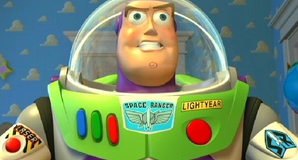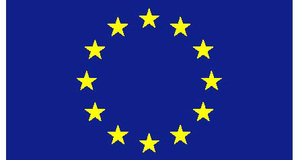20 years ago this week, Microsoft just about killed Australian PC manufacturing
Remembering the demise of Osborne Computer

Osborne Computer: A victim of circumstance?
62
11
16
In late June of 1995, Australia's top PC manufacturer Osborne went into voluntary administration, caused in part by tactics that made Microsoft the titan it is today – and shaped our industry in nasty ways.
Osborne Australia started life as the local distributor of the famed Osborne One CP/M luggable made by US company Osborne Computer Systems. By the mid-1990s Osborne Australia had become Australia's top PC maker, thanks in part to a network of over 50 retail stores, many in regional areas. The company also won plenty of corporate clients at a time that many were starting to build substantial PC fleets.
“At that time there was a home grown mentality among PC buyers, especially for businesses,” says Gartner managing vice president Matthew Boon. IBM had therefore made much of the fact it built PCs in rural Wangaratta, a town 200km from the nearest port but still a hub for exports to Asia. Osborne took on IBM at its own game and won, claiming the top sales spot in Australia..
The retail network was a huge factor in that success and reflected the fact that in the mid-1990s a PC still cost AU$2,000 or more, comfortably a month's salary for plenty of workers and a very significant purchase for many businesses. Matt Burke, a former Osborne owner, told us that shopping with the company “involved multiple trips to the sales room, hands shaken, contracts signed – more like buying a car than buying a computer now.”
Jeremy James, who worked for Osborne in the mid-nineties, recalls that the company had a culture to match that shopping experience. James was recruited as a graduate, whereupon Osborne moved him to Sydney and paid for his accommodation for a fortnight while he found his feet. James says cohorts of people joined the company in this way and as many were new to Sydney, long hours and socialising among co-workers was natural.
“The company got 12-15 hours of work a day because there was nothing else to do for those who moved to Sydney,” he recalls. The workers' effort wasn't grudging: the company had a close-knit culture and strong belief in the company's mission to become Australia's dominant PC company.
Advancement could also be rapid: James started on the PC assembly line and three months later found himself a production supervisor after suggesting and implementing some useful innovations.
But not all was well at Osborne Australia, in part because of Microsoft's insistence that PC-makers who wished to resell Windows must pay Microsoft a licence fee for every machine they sold, regardless of the installed operating system. That licence had the fully-intended consequence of forcing PC-makers to ask themselves if they could really be bothered selling machines pre-loaded with IBM's OS/2, which at the time was a more-than-decent competitor to Windows. Many PC-makers decided that if they had to pay for Windows on every machine, they might as well sell only Windows machines.
Osborne's famously feisty CEO John Linton didn't like that deal and eventually decided he'd find a way to move PCs without giving in to Microsoft's tactics.
Osborne therefore came up with offers like a a free printer with a new PC, a big promise at a time printers weren't cheap. Lifetime warranties were another lure. Osborne also priced its products keenly ... if you paid up front and were willing to wait six weeks for your machine to be delivered.
James says these offers didn't make a difference on the production line, where a just-in-time production plan extended to last-minute parts procurements and a daily challenge to meet construction quotas. By 1995 James had moved into the retail arm of the company and said OS/2 PCs didn't deter retail shoppers. He had inklings, however, that corporate and government buyers weren't as keen on OS/2.
Windows, meanwhile, was gathering pace. And so did Osborne's offers: at one point the company pledged to replace a PC's hard drive and CPU after two years, a great deal at a time when Intel could bump clock speeds by 20 per cent in a year.
By mid-1995, when your correspondent entered the industry at the long-departed PC Week Australia, Osborne was a top-tier technology provider. No roundup of PCs could exclude its latest offerings. No discussion of Australia's emerging technology industry could omit it.
But the company was struggling. This CBR report from June 30th, 1995, says it had lost big contracts with the Australian government and the nation's top telco, Telstra. Consumers were complaining about the company, probably for slow delivery of pre-paid PCs.
Currency-trading efforts using cashflow generated by pre-payments wasn't making up the gap and the company collapsed, suddenly and swiftly, leaving hundreds of customers waiting for PCs they'd paid for. Jeffrey James says there were lay-offs in the Townsville store where he worked within days of Osborne entering insolvency.
Osborne Australia started life as the local distributor of the famed Osborne One CP/M luggable made by US company Osborne Computer Systems. By the mid-1990s Osborne Australia had become Australia's top PC maker, thanks in part to a network of over 50 retail stores, many in regional areas. The company also won plenty of corporate clients at a time that many were starting to build substantial PC fleets.
“At that time there was a home grown mentality among PC buyers, especially for businesses,” says Gartner managing vice president Matthew Boon. IBM had therefore made much of the fact it built PCs in rural Wangaratta, a town 200km from the nearest port but still a hub for exports to Asia. Osborne took on IBM at its own game and won, claiming the top sales spot in Australia..
The retail network was a huge factor in that success and reflected the fact that in the mid-1990s a PC still cost AU$2,000 or more, comfortably a month's salary for plenty of workers and a very significant purchase for many businesses. Matt Burke, a former Osborne owner, told us that shopping with the company “involved multiple trips to the sales room, hands shaken, contracts signed – more like buying a car than buying a computer now.”
Jeremy James, who worked for Osborne in the mid-nineties, recalls that the company had a culture to match that shopping experience. James was recruited as a graduate, whereupon Osborne moved him to Sydney and paid for his accommodation for a fortnight while he found his feet. James says cohorts of people joined the company in this way and as many were new to Sydney, long hours and socialising among co-workers was natural.
“The company got 12-15 hours of work a day because there was nothing else to do for those who moved to Sydney,” he recalls. The workers' effort wasn't grudging: the company had a close-knit culture and strong belief in the company's mission to become Australia's dominant PC company.
Advancement could also be rapid: James started on the PC assembly line and three months later found himself a production supervisor after suggesting and implementing some useful innovations.
But not all was well at Osborne Australia, in part because of Microsoft's insistence that PC-makers who wished to resell Windows must pay Microsoft a licence fee for every machine they sold, regardless of the installed operating system. That licence had the fully-intended consequence of forcing PC-makers to ask themselves if they could really be bothered selling machines pre-loaded with IBM's OS/2, which at the time was a more-than-decent competitor to Windows. Many PC-makers decided that if they had to pay for Windows on every machine, they might as well sell only Windows machines.
Osborne's famously feisty CEO John Linton didn't like that deal and eventually decided he'd find a way to move PCs without giving in to Microsoft's tactics.
Osborne therefore came up with offers like a a free printer with a new PC, a big promise at a time printers weren't cheap. Lifetime warranties were another lure. Osborne also priced its products keenly ... if you paid up front and were willing to wait six weeks for your machine to be delivered.
James says these offers didn't make a difference on the production line, where a just-in-time production plan extended to last-minute parts procurements and a daily challenge to meet construction quotas. By 1995 James had moved into the retail arm of the company and said OS/2 PCs didn't deter retail shoppers. He had inklings, however, that corporate and government buyers weren't as keen on OS/2.
Windows, meanwhile, was gathering pace. And so did Osborne's offers: at one point the company pledged to replace a PC's hard drive and CPU after two years, a great deal at a time when Intel could bump clock speeds by 20 per cent in a year.
By mid-1995, when your correspondent entered the industry at the long-departed PC Week Australia, Osborne was a top-tier technology provider. No roundup of PCs could exclude its latest offerings. No discussion of Australia's emerging technology industry could omit it.
But the company was struggling. This CBR report from June 30th, 1995, says it had lost big contracts with the Australian government and the nation's top telco, Telstra. Consumers were complaining about the company, probably for slow delivery of pre-paid PCs.
Currency-trading efforts using cashflow generated by pre-payments wasn't making up the gap and the company collapsed, suddenly and swiftly, leaving hundreds of customers waiting for PCs they'd paid for. Jeffrey James says there were lay-offs in the Townsville store where he worked within days of Osborne entering insolvency.
Next page: Gateway 2000 to the rescue
16 Comments
More from The Register
Whitepapers
RAID: End of an era?
Ceph-based FUJITSU Storage ETERNUS CD10000: an improvement over traditional RAID-based storage systems in OpenStack cloud environments.
Next generation criminal fraud detection
As fraud rises and the customer experience diminishes, there is a strong need for fraud tools that can stop fraud effectively, while actually enhancing the customer experience.
Backing up White River Health System effortlessly
White River Health System needed to increase the reliability of nightly backups while decreasing the effort required to troubleshoot them.
The business case for protecting against advanced attacks
If you want to make your case for investing in an advanced security solution to your company’s executives, then you’ll need to think like your executives
Most read
- Buh bye fakers? Amazon tweaks customer product reviews system
- Microsoft U-turns on 'free' Windows 10 upgrade promise for ALL previewers
- Say 'cheese'! Cassini probe ZOOMS IN on Saturn's craggy Dione moon
- Buy with your head, drive with your heart: Alfa Romeo 4C Coupe
- Apple to replace DODGY hard drives that go BELLY UP in 27-inch iMac
Spotlight

How Music Got Free and Creatocracy

Foxconn's going to 'exploit' Indian labour? SCORE! Bye, poverty

'Snowden risked lives' fearfest story prompts sceptical sneers

Elon Musk's $4.9 BEELLLION taxpayer windfall revealed

Why are all the visual special effects studios going bust?

Well YES, Silicon Valley VCs do think you're a CRETIN

Facebook echo chamber: Or, the British media and the election

EU geo-blocking: Ansip's crusade liable to disappear through 'unjustifiable' loophole






